Orthodontic treatments go a long way for everyone, at any age. Orthodontics focuses on rectifying the different types of oral conditions such as teeth crowding, crossbites, spacing and more. Additionally, such treatments are done not only to enhance the entire look, but also to obtain better teeth for long term oral health benefits as well as to improve gut health and neck pain associated with an existing dental condition.
As you are determined to get your teeth fixed, there are quite a number of things you should know as each orthodontic treatment is different. While there is no doubt that your orthodontist will discuss with you in detail about your options, depending on your dental condition, here’s a quick guide and summary of everything you should know about orthodontics!
So, let’s begin with the different types of teeth misalignment.
TEETH MISALIGNMENT
The official term of teeth misalignment is malocclusion. Although, it’s probably not a word you’ll hear often. You’ll become pretty familiar with it especially when you start your treatment.

There are different types of malocclusions and it is more than just a crowded mouth or teeth with gaps.
OVERCROWDING
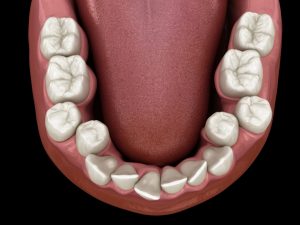
Teeth overcrowding or overcrowded teeth is a very common condition and is often caused by the lack of space, causing some teeth to be pushed behind or ahead of the rest. As your teeth begin to grow, they literally run out of space, therefore, resulting in this.
OVERJET
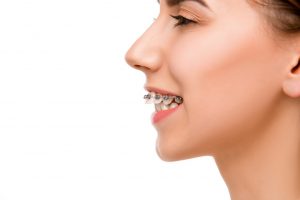
This occurs when the front of your top set of teeth grow past the bottom set. Overjet doesn’t only affect your appearance, but it also causes difficulty while chewing and drinking.
OVERBITE
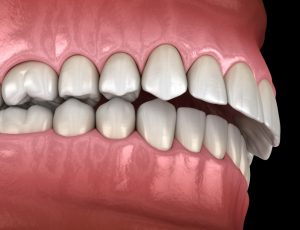
An overbite is a normal occurrence and nearly everybody has it. This condition presents itself when the upper teeth stick out a little too far from the lower teeth.
CROSSBITE
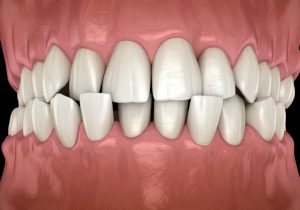
A crossbite is where the upper teeth bite fits inside the lower teeth. This misalignment can affect just a single tooth or groups of teeth.
ANTERIOR CROSSBITE (UNDERBITE)
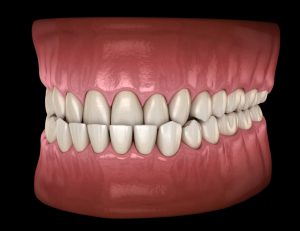
Underbite or also known as anterior crossbite misalignment. It is characterised by the lower teeth that extends outward than the upper front teeth.
SPACING
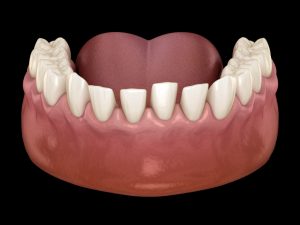
The spacing of the teeth can occur between two or more teeth. Some of the common causes of spacing may include missing teeth, small teeth, thumb sucking and tongue thrusting.
IMPACTED TOOTH
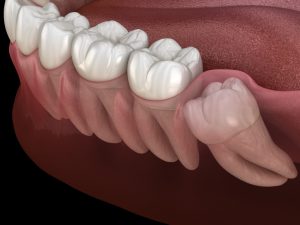
An impacted tooth misalignment is when the tooth, for some reason, has been blocked from breaking through the gum. The possible treatments are either to remove the said tooth or exposing it so that the braces can be fitted well.
TRADITIONAL BRACES OR ALIGNERS?
Now that you’re aware of the different types of teeth misalignments, you can easily know your teeth condition and may ask your orthodontist what is the best way to overcome the issue.
Traditionally, many people would opt for braces. However, teeth aligners are one of the newer treatment options that are gaining lots of popularity.
Many patients, their parents or adults in general often have the same question on which option would be best for their child or even for themselves. However, it depends on their teeth condition and in most cases, it depends on their personal choices as well.
To help you have a clear understanding of the differences between these two treatments, we thought of providing some basic information to help you consider your options.

Below is a comparison of both traditional braces and aligners:
| Traditional Braces | Aligners | |
| Differences | Ideal for complex bite alignment such as
severe crowding or underbites. |
Ideal for mild tooth crowding
or minor tooth movement. |
| Purpose | Straighten teeth out | Straighten teeth out |
| Is everyone a candidate? | Yes | No |
| Comfort level | Mild discomfort | Little discomfort |
| Duration | Typically 18 months to three years,
depending on each case. |
Typically 12 to 18 months, depending on
compliance and teeth condition. |
| Removable | Unable to remove until the end of
the course of treatment |
Able to remove at anytime of the day |
| Check-ups | Monthly visits | Depending on patient-doctor agreement. |
| Visibility | Highly visible | Virtually invisible |
| Hygiene | Difficult to maintain oral hygiene | Much easier to maintain oral hygiene |
| Food requirements | Many food restrictions | Able to eat almost anything |
| Alteration of speech | There’s a slight speech alteration. | Slight effect on speech
at the beginning of treatment |
| Broaden smile | Yes | Yes |
| Straighten teeth | Yes | Yes |
Be as it may, before deciding on which suits you the best, remember to consult your orthodontist as they will be able to provide a much clearer understanding according to your teeth formation or structure.
For many cases, both options are available which means you’re able to make a decision according to your preference.
Sources: Colgate, Total Orthodontist, Healthline











